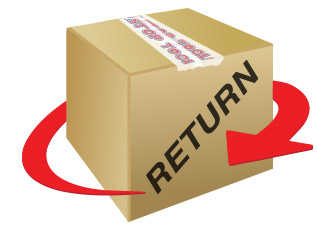Book returns. Self-published authors hate them, but they are a necessary part of doing business with booksellers. Read on to learn how book returns work.
Historically, publishers offer booksellers the right to return overstocked or unwanted copies of books they’ve purchased previously. As books are returned, booksellers charge publishers for the cost of books returned and expect to be reimbursed. Just as you would expect to be refunded for a good you return to a store, so too do booksellers expect to be reimbursed for returns.
The cost of returned books is usually deducted against the proceeds of book sales of the publisher, or author in our case. Every author experiences returns and these should be factored into your business forecasts and budgeting practices.
Most brick and mortar stores like Barnes & Noble will not order a book unless it is returnable. And since Barnes & Noble prefers to work with publishers like Ingram, self-published authors who use their services must adhere to the return policy. IngramSpark follows the standard industry policies by allowing publishers to decide whether or not their titles can be returned. The publisher can make this choice at the time of initial title setup. However, keep in mind that any titles that are non-returnable may not be carried or purchased by a major bookstore.
Three Options
There are three common options available to publishers:
Non-returnable
This option states that the author or publisher does not wish to offer buyers the right to return unwanted copies previously purchased. Most brick and mortar booksellers will not like this option.
Returnable with Delivery
Copies of books that are returned under this option will be shipped to the publisher and the costs associated billed to the publisher’s account or deducted from the publisher’s sales proceeds. This is the method we recommend so that you receive the copies of the books back to sell to other buyers. These copies may either be resold or gifted. Another great use of returned copies in good condition are to offer them as marketing swag at events.
Returnable with Destruction
Books returned under this method are destroyed and the publisher is billed for the costs of the returned copies. You will not receive any copies back as the books have been destroyed. We do not recommend this method. You already are paying for the books due to the return. You might as well have them delivered to you so you can resell them.
The bottom-line is that returns are just a part of doing business. Every author and publisher must accept returns if they want to be carried in bookstores everywhere.
Have you experienced returns of your books? If so, we’d like to hear about your experiences in the comment section below!
We might earn a small affiliate commission from recommending products and services, and we may earn some revenue from ads. This is to help manage the costs of hosting and maintaining this website. Your support is appreciated. Click here to support us with Patreon: 80percentdone.


